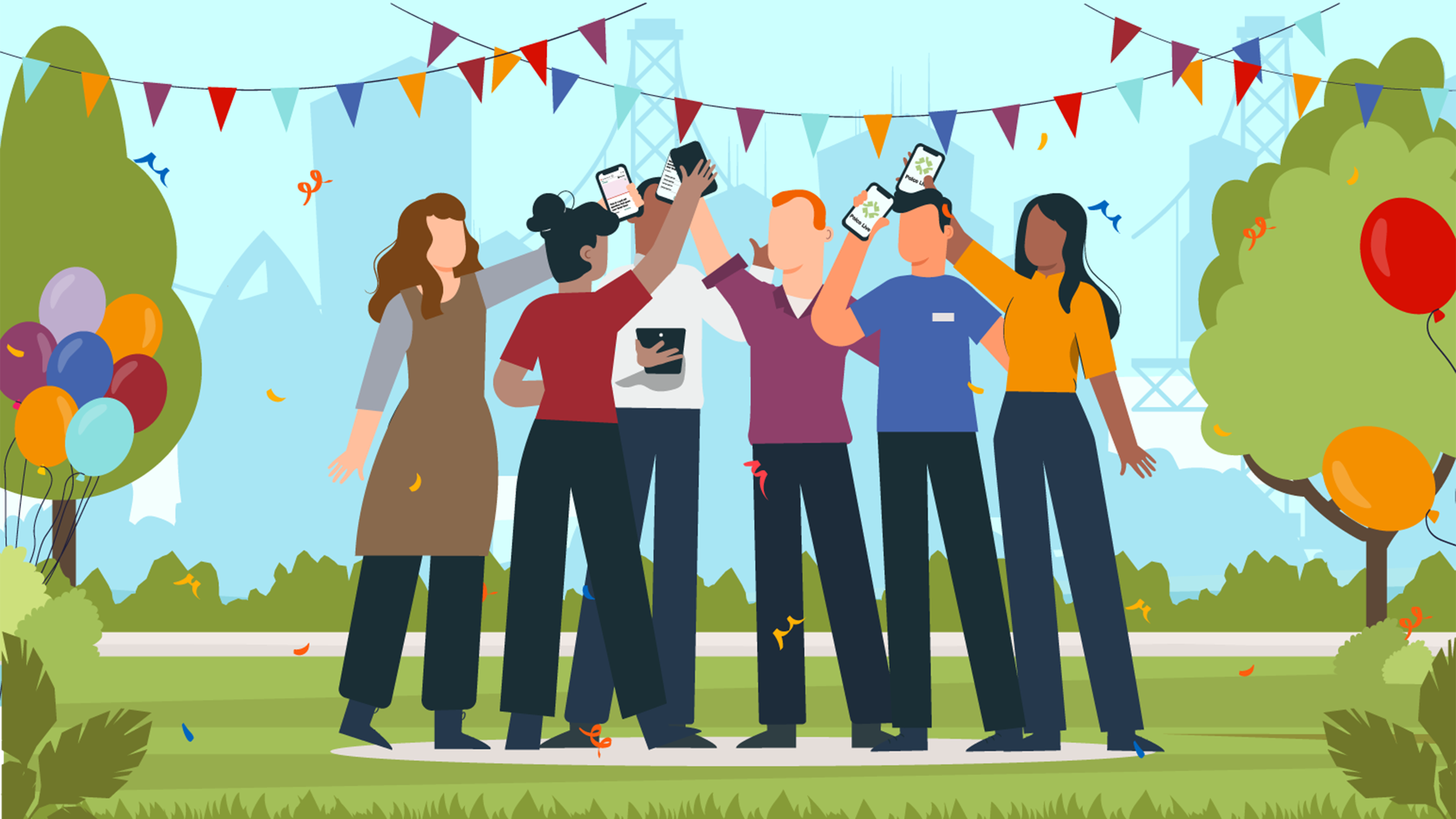Two Ways Local Governments Can Build a Culture of Community Engagement
By Polco on December 9, 2020

With more residents interacting online than ever before, how can your local government best build a culture of community engagement?
-By Julia Steege-Reimann-
When you think about local governments engaging their communities, you might picture a public meeting. Yes, this can be a useful way to communicate to residents. But alone, traditional meetings are not enough to help you engage the community in a holistic and convenient way, or to successfully plan for your residents’ needs.
After all, only about 20% of US residents say they have ever attended a local government meeting. And during the past year especially, in-person meetings are even more inaccessible for most people. Plus circumstances seem to be shifting constantly these days. You need feedback from residents in real time to best move your community forward.
With people online more than ever before, now is a perfect time to think about how to reach your community members where they are. And with so many challenging decisions to make, now is the time to figure out how to reach residents regularly.
“While many local leaders have dealt with crises, most in America have not dealt with a pandemic,” said Michelle Kobayashi, Senior Vice President of Innovation for Polco, a leading civic engagement tech firm. “Governments are grappling with decisions on how to best respond. Because we don’t have a playbook for how best to respond to a pandemic, it’s never been more essential to work together consistently with residents. Now is the time to invest in building a culture of community engagement.”
“Truly making engagement part of your culture requires commitment. That means prioritizing engagement at every opportunity and giving residents a chance to share feedback about every issue that matters to them,” said civic outreach expert Angelica Wedell, Marketing and Communications Director at Polco.
“I know that sounds like a lot,” Wedell added. “But with the right strategy and tool, you can be very successful without extra burden.”
Polco’s passion is using technology to engage people around important topics. So here are two ways Polco can help your local government deepen a culture of engagement.
Two Ways To Build a Culture of Community Engagement
1. Create a Plan
Engaging your residents won’t happen by randomly reaching out and hoping people get back to you.
“Creating a thoughtful and holistic community engagement plan will help you to reach more of your residents more successfully,” said Kobayashi. “It’s definitely worth putting thought into how you are engaging your residents.”
A good engagement plan answers: how will you gather continuous and reliable feedback? Who do you want to hear from? How will you analyze and put the data into relevant context? How will you take action from your results?
Once you have your plan written down, think about what tools you will need to get the job done.
Collaborating on community engagement across different departments shows your residents that the entire local government cares to listen.
Coordinating your outreach helps you get the word out to more folks about all your different surveys and polls. This inclusive approach also helps you hear from a wider, more diverse range of people.
As a local government leader, you see how the work of different city departments are entwined. So why not share survey data? When multiple departments conduct convenient, online surveys on Polco, you can easily share insights. This helps you to connect the dots and understand the forest from the trees.
For example, the Chamber of Commerce could use Polco to ask questions about workforce skills, jobs in the area, as well as what jobs residents want brought to the region. School leaders all the way from the district level to the classroom level can use this data to understand the skills and occupations they need to prepare their students for.
“When you work hard to break down silos across departments, your whole community benefits. And your residents will notice,” said Kobayashi.
2. Reach Those Who Are Missing
Often at public meetings, only the loudest, most opinionated voices are in the room. (By now, you probably know those five people by name.) But who else is missing? And why aren’t they there?
“They say the squeaky wheel gets the grease,” said Wedell. “This is true in local government too. The good news is lowering barriers to participation brings balance and helps you hear from more types of people.”
Creating more accessible opportunities for more residents to participate will help you to make decisions that serve all. With Polco, you can invite anybody to take your online surveys. Responding is easy and busy residents can take those surveys on their own time. This convenience makes for much more feedback overall.
Your residents can even sign up to follow you on Polco. (Followers get notifications to take your next survey or poll.) Then you can watch your following grow! To protect their privacy, Polco never reports individual data. Instead, you can see general demographic information including age range and gender.
You can use this data to learn more about who you are missing. Then reach out to those groups, and incorporate those efforts into your overall engagement plan. Your end results will be far more inclusive and you can ensure more equitable decision-making.
The Polco platform can help you with all of these strategies for deepening your culture of community engagement. Learn more.
Related Articles
- How Wichita Made Community Engagement Its Core
- How Online Polling Transforms Resident Engagement in Oshkosh
- How Local Governments Can Partner with Residents for a Better COVID-19 Recovery
Popular posts
Sign-up for Updates
You May Also Like
These Related Stories

What Is Really Happening To City Budgets During COVID-19?

Cheers to Consistency: Why It Matters and How to Get There

